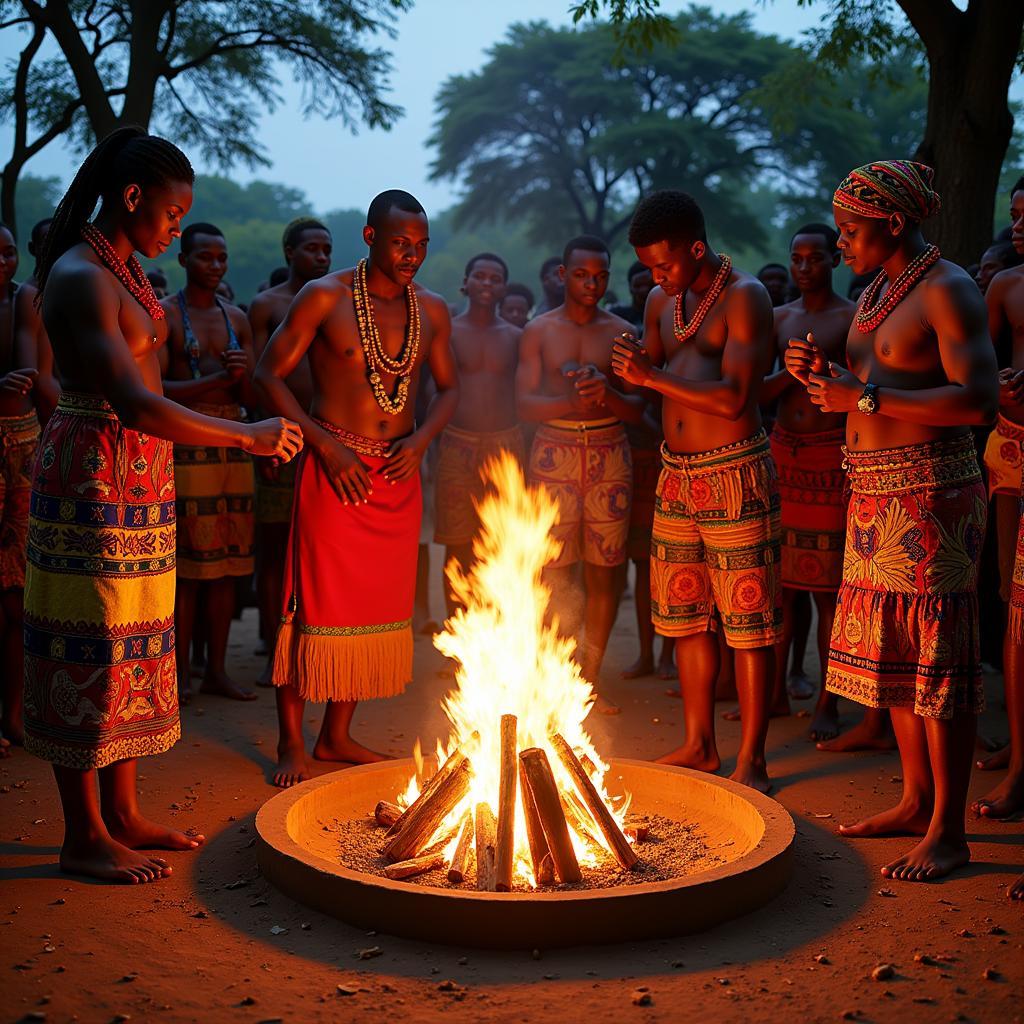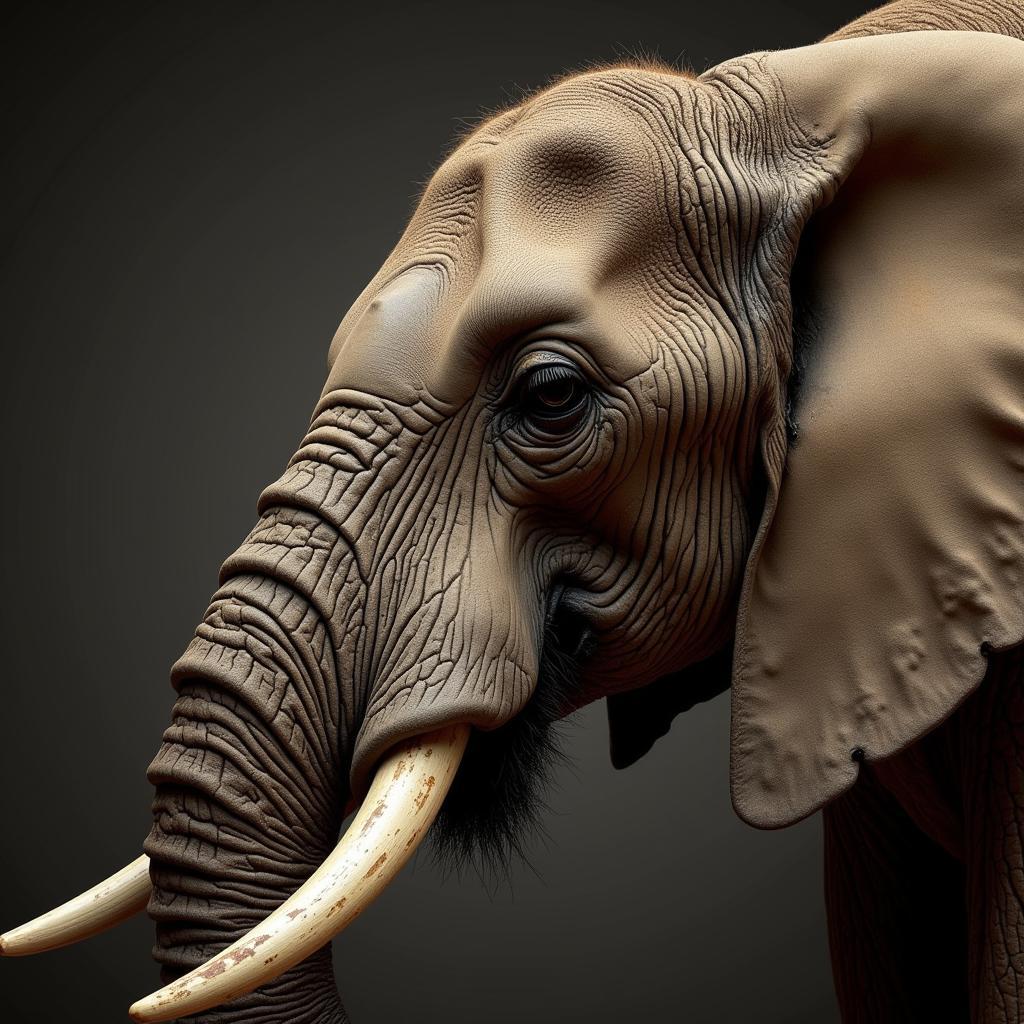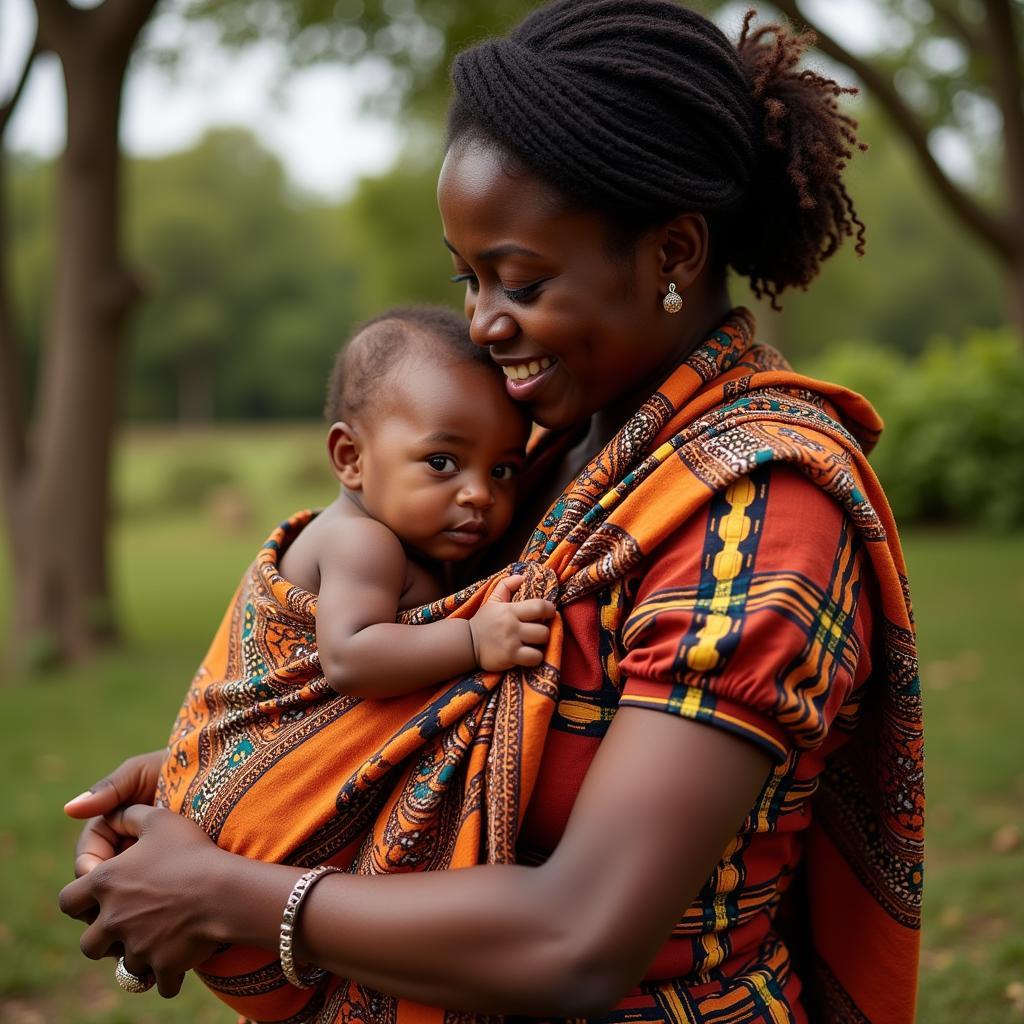Exploring the Rich Tapestry of East African People
East African People represent a vibrant mosaic of cultures, languages, and traditions, shaped by the region’s unique history and geography. From the bustling streets of Nairobi to the serene shores of Zanzibar, East Africa pulsates with a rhythm all its own. This exploration delves into the heart of this captivating region, offering a glimpse into the lives, beliefs, and values that define its people.
A Kaleidoscope of Cultures and Ethnicities
East Africa is a melting pot of over 100 distinct ethnic groups, each contributing to the region’s rich cultural tapestry. Among the most prominent are the Maasai, known for their pastoralist lifestyle and vibrant attire, and the Kikuyu, the largest ethnic group in Kenya renowned for their agricultural prowess. The Swahili people, whose language serves as a lingua franca across much of the region, boast a rich heritage influenced by Arab, Indian, and African traditions.
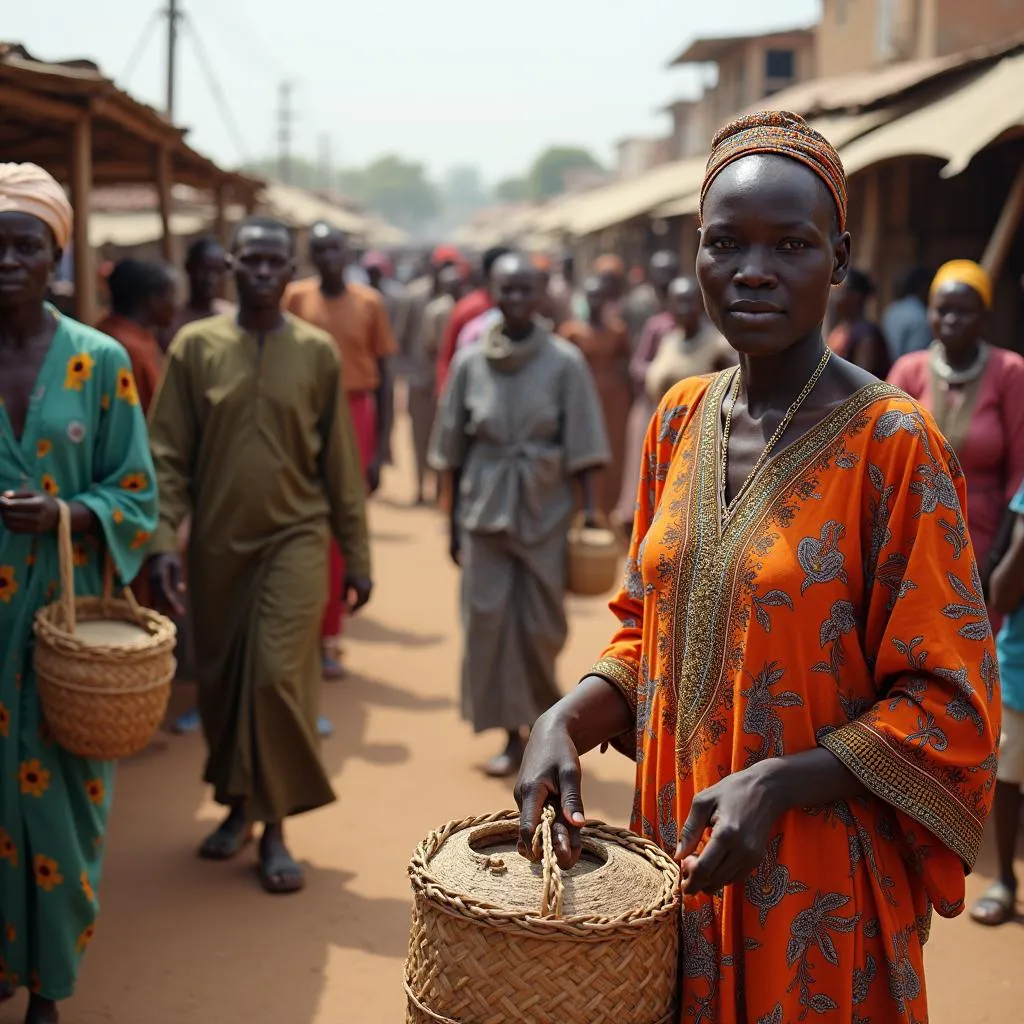 East African Market Vendors
East African Market Vendors
Other notable groups include the Luo, renowned for their fishing traditions on the shores of Lake Victoria, and the Hadzabe of Tanzania, one of the last remaining hunter-gatherer societies in Africa. Each group possesses unique customs, languages, and belief systems that have been passed down through generations, contributing to the kaleidoscope of cultures that defines East Africa.
Traditions and Customs: A Glimpse into East African Life
Family and community lie at the heart of East African societies. Respect for elders is paramount, and traditional kinship ties play a significant role in social structures. Many communities practice communal land ownership and resource sharing, fostering a strong sense of interdependence.
Music and dance are integral to East African culture, serving as vibrant expressions of joy, sorrow, and societal values. From the rhythmic drumming and energetic dances of the Maasai to the melodic Taarab music of Zanzibar, the region pulsates with an infectious rhythm.
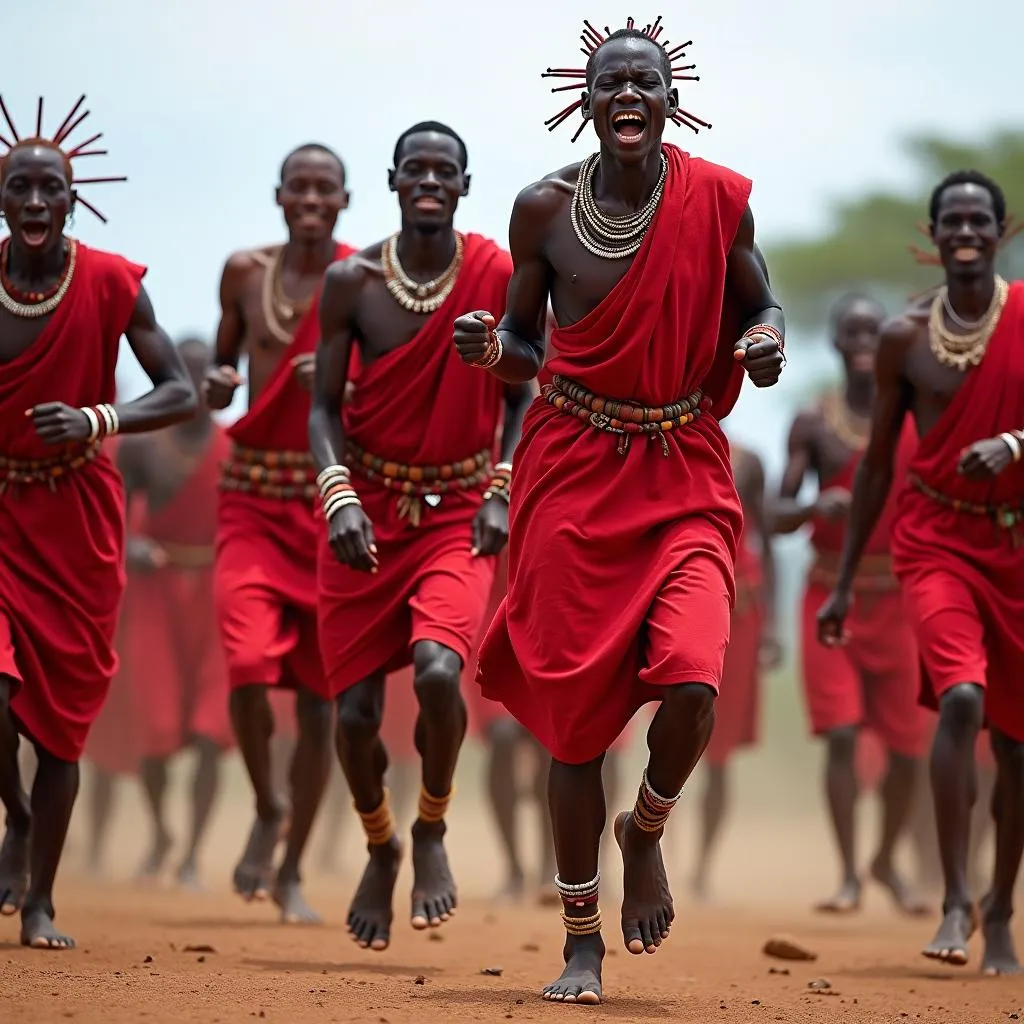 Maasai Warriors Performing Traditional Dance
Maasai Warriors Performing Traditional Dance
Religion also plays a significant role in shaping the values and beliefs of East African people. Christianity and Islam are the two most widely practiced religions, often blending with indigenous beliefs and practices to create unique syncretic faiths.
From Cuisine to Craftsmanship: A Celebration of East African Heritage
East African cuisine is as diverse as its people, reflecting a fusion of flavors influenced by Arab, Indian, and indigenous culinary traditions. Staples like ugali (maize porridge), matoke (plantain stew), and nyama choma (grilled meat) are enjoyed across the region, each country boasting its own unique variations and specialties.
Beyond its culinary delights, East Africa is renowned for its vibrant art scene. The region is home to a rich tradition of woodcarving, with artisans crafting intricate masks, sculptures, and furniture that reflect local myths, legends, and daily life. Colorful kanga cloths, adorned with proverbs and intricate designs, are not only a fashion statement but also serve as a means of communication and storytelling.
 Colorful Kanga Cloths Displayed in a Market
Colorful Kanga Cloths Displayed in a Market
The intricate beadwork of the Maasai and the vibrant Tingatinga paintings of Tanzania are further testaments to the creativity and artistry that thrives in East Africa. These art forms offer a tangible connection to the region’s cultural heritage, preserving traditions and stories for generations to come.
East Africa Today: Embracing Progress While Honoring Heritage
East Africa today stands at a crossroads, balancing rapid modernization with the preservation of its rich cultural heritage. As cities grow and technology advances, East African people are navigating the complexities of globalization while striving to retain their unique identities.
Despite the challenges, the spirit of resilience, community, and a deep-rooted connection to their heritage continues to define the people of East Africa. From the bustling markets to the tranquil savannas, the region pulsates with a vibrant energy, promising a future as bright and diverse as its people.
FAQs About East African People
What is the most commonly spoken language in East Africa?
Swahili, also known as Kiswahili, is the most widely spoken language in East Africa, serving as a lingua franca across the region.
What are some of the major religions practiced in East Africa?
Christianity and Islam are the two most widely practiced religions in East Africa. Many communities also incorporate elements of traditional indigenous beliefs into their religious practices.
What is the traditional clothing worn by East African people?
Traditional clothing varies significantly across different ethnic groups. For instance, Maasai men are known for their red shukas, while women wear colorful beaded necklaces and bracelets. Kanga cloths, vibrant fabrics with printed proverbs and designs, are popular among women across East Africa.
What are some of the main economic activities in East Africa?
Agriculture plays a significant role in East African economies, with coffee, tea, and flowers being major exports. Tourism is another important sector, drawing visitors from around the world to experience the region’s stunning wildlife and vibrant cultures.
What are some of the challenges faced by East African people today?
East Africa faces challenges such as poverty, inequality, climate change, and political instability. However, the region is also characterized by its resilience, entrepreneurial spirit, and a strong sense of community.
Discover More About the Wonders of Africa
- Uncover the secrets of the African berry from Congo and its health benefits.
- Dive into the world of African freshwater fishes and their unique adaptations.
- Explore the artistry and symbolism behind African folk art dolls.
For assistance with any inquiries or to learn more about the diverse cultures of East African people, please reach out to us. Contact us at +255768904061 or [email protected]. We are located at Mbarali DC Mawindi, Kangaga, Tanzania, and our dedicated customer support team is available 24/7 to assist you.
